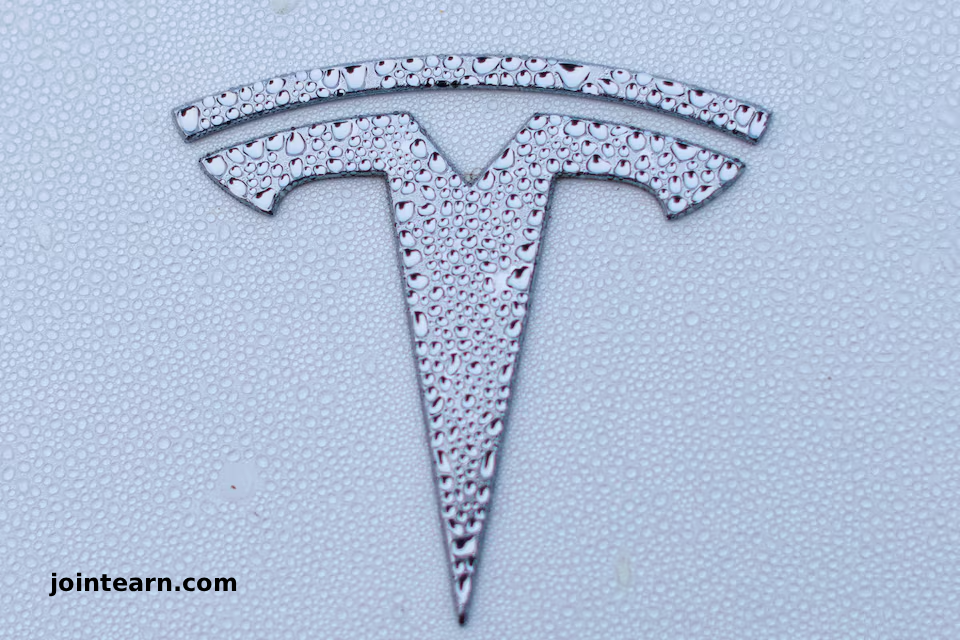
Tesla Shares Dip as Profit Miss Raises Investor Concerns Amid Rising Costs and Tariff Pressures
SEO Keywords: Tesla share price, Tesla stock falls, Tesla Q3 earnings, Elon Musk Tesla, Tesla profit miss, Tesla EV sales, Tesla Model Y, Tesla Model 3 price cuts, Tesla Trump tariffs, Tesla AI strategy, Tesla compensation vote, Tesla investors, EV market trends
Tesla Stock Slides After Quarterly Profit Miss Despite Record Deliveries
October 23, 2025 — Tesla Inc. (NASDAQ: TSLA) shares fell 3% in pre-market trading on Thursday, as the world’s leading electric vehicle (EV) maker missed quarterly profit expectations for the fourth consecutive quarter, despite reporting record-breaking vehicle deliveries. The earnings shortfall was driven by rising production costs, fading regulatory credits, and escalating U.S. tariffs, unsettling investors and raising questions about Tesla’s near-term profitability.
Tesla’s persistent margin squeeze comes amid a volatile economic environment and a broad policy overhaul under President Donald Trump, which has reshaped trade relations and imposed fresh cost burdens on automakers with global supply chains.
Rising Costs and Tariffs Pressure Tesla’s Margins
Chief Financial Officer Vaibhav Taneja confirmed that Tesla’s quarterly expenses were inflated by more than $400 million in new tariffs on auto parts — a direct result of Trump’s aggressive trade measures targeting manufacturing imports.
The company also saw a sharp reduction in regulatory credit revenue, a key buffer in past quarters, compounding the margin hit. Analysts said these headwinds underline Tesla’s growing exposure to global trade policy volatility.
“Even Tesla isn’t immune to the cost crunch hitting the auto sector,” Reuters noted, emphasizing how the company’s production efficiencies and scale advantage could only partially offset rising input and tariff-related costs.
Tesla Revenue Hits Record — But Profit Disappoints
Despite the earnings miss, Tesla’s third-quarter revenue topped market forecasts, supported by record EV sales as U.S. consumers rushed to take advantage of expiring federal tax incentives. However, as those incentives phase out, Tesla and its EV competitors may see slowing demand through the remainder of 2025.
To maintain momentum, Tesla introduced new “Standard” variants of its Model 3 and Model Y, offering lower entry prices with reduced range and fewer premium features. These models were priced up to $5,500 lower than existing versions — a clear bid to protect market share as price-sensitive buyers hesitate in an inflationary environment.
Investor Sentiment and Market Reaction
Tesla shares have been highly volatile throughout 2025, swinging as much as 39% lower in early March amid boycott calls and political backlash tied to Elon Musk’s public support for the Trump administration.
While Tesla’s stock later recovered on optimism about its AI and robotics initiatives, this latest profit miss has renewed investor caution. The stock, still up about 9% year-to-date, remains a laggard among the “Magnificent 7” mega-cap tech group, including Apple, Nvidia, and Microsoft.
“After such a strong six-month rally, sentiment was bound to be fragile,” said Matt Britzman, senior equity analyst at Hargreaves Lansdown. “By Tesla’s standards, this pullback is minor — but it highlights just how sensitive the stock is to earnings surprises.”
Musk’s AI Vision Faces Investor Scrutiny
CEO Elon Musk’s ongoing focus on artificial intelligence (AI), autonomous driving, and robotics continues to divide analysts. While Musk insists these technologies will underpin Tesla’s future growth, the company has provided limited detail on development costs or commercial timelines.
Investors are now closely watching Tesla’s upcoming shareholder vote on Musk’s compensation package, which analysts say could determine his long-term commitment to the company. Many see Musk’s presence as vital to Tesla’s continued leadership in EV innovation — even as concerns grow over his external ventures and political engagement.
Outlook: Balancing Growth, Innovation, and Cost Pressures
As Tesla navigates a tightening cost environment, tariff uncertainty, and shifting EV incentives, analysts say the company must strike a balance between price competitiveness and profitability.
Tesla’s AI-driven future and autonomous vehicle ambitions remain major long-term growth pillars, but the immediate challenge lies in sustaining earnings amid volatile policy landscapes and softening consumer demand.
“Tesla’s brand strength and scale remain unmatched,” said Danilo Masoni, a market analyst in London. “But profitability will hinge on how effectively it manages trade costs and sustains innovation without sacrificing margins.”
Key Takeaways
- Tesla shares fell 3% in pre-market trading after a fourth straight profit miss.
- Record EV deliveries boosted revenue but failed to offset rising tariffs and cost inflation.
- $400 million tariff impact added pressure to quarterly margins.
- Lower-priced Model 3 and Model Y variants launched to counter weaker demand.
- Musk’s AI and robotics push continues to fuel debate over near-term costs vs. long-term vision.
- Analysts expect continued volatility ahead of Tesla’s next earnings cycle and compensation vote.


Leave a Reply